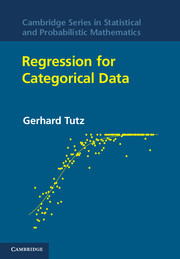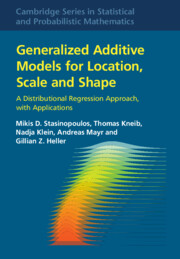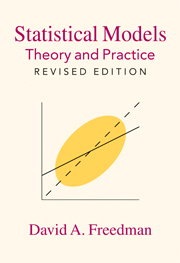Regression for Categorical Data
This book introduces basic and advanced concepts of categorical regression with a focus on the structuring constituents of regression, including regularization techniques to structure predictors. In addition to standard methods such as the logit and probit model and extensions to multivariate settings, the author presents more recent developments in flexible and high-dimensional regression, which allow weakening of assumptions on the structuring of the predictor and yield fits that are closer to the data. A generalized linear model is used as a unifying framework whenever possible in particular parametric models that are treated within this framework. Many topics not normally included in books on categorical data analysis are treated here, such as nonparametric regression; selection of predictors by regularized estimation procedures; ternative models like the hurdle model and zero-inflated regression models for count data; and non-standard tree-based ensemble methods. The book is accompanied by an R package that contains data sets and code for all the examples.
- Covers modern topics such as high-dimensional regression and nonparametric models
- Can be used as a text for courses on categorical data for students from different fields
- Written from the perspective of an applied statistician for a focus on basic concepts and applications, rather than formal mathematical theory
Product details
November 2011Hardback
9781107009653
572 pages
257 × 185 × 36 mm
1.16kg
98 b/w illus. 102 tables 77 exercises
Available
Table of Contents
- 1. Introduction
- 2. Binary regression: the logit model
- 3. Generalized linear models
- 4. Modeling of binary data
- 5. Alternative binary regression models
- 6. Regularization and variable selection for parametric models
- 7. Regression analysis of count data
- 8. Multinomial response models
- 9. Ordinal response models
- 10. Semi- and nonparametric generalized regression
- 11. Tree-based methods
- 12. The analysis of contingency tables: log-linear and graphical models
- 13. Multivariate response models
- 14. Random effects models
- 15. Prediction and classification
- Appendix A. Distributions
- Appendix B. Some basic tools
- Appendix C. Constrained estimation
- Appendix D. Kullback–Leibler distance and information-based criteria of model fit
- Appendix E. Numerical integration and tools for random effects modeling.




